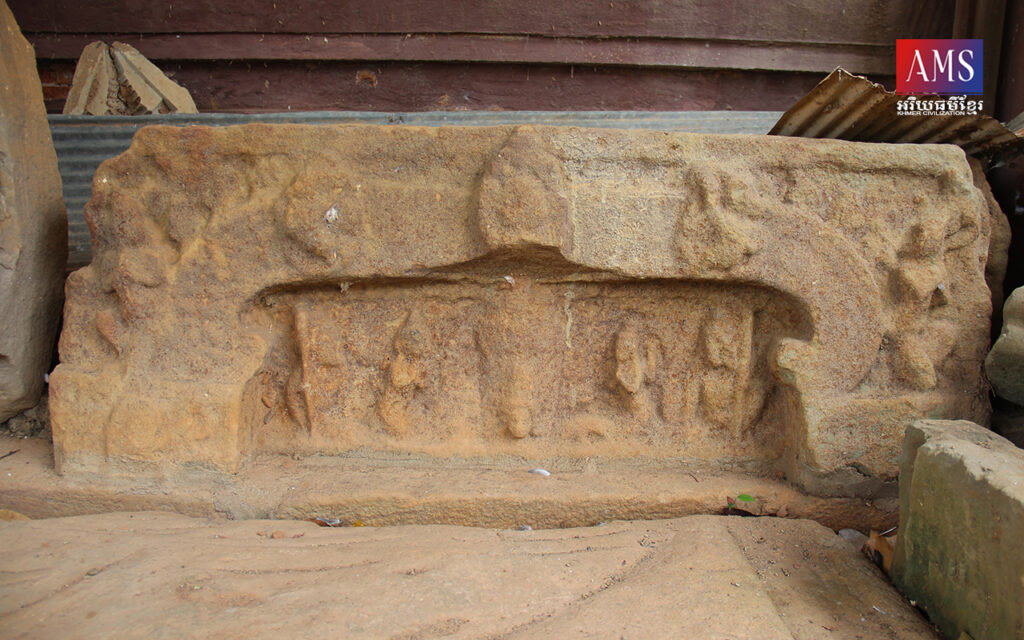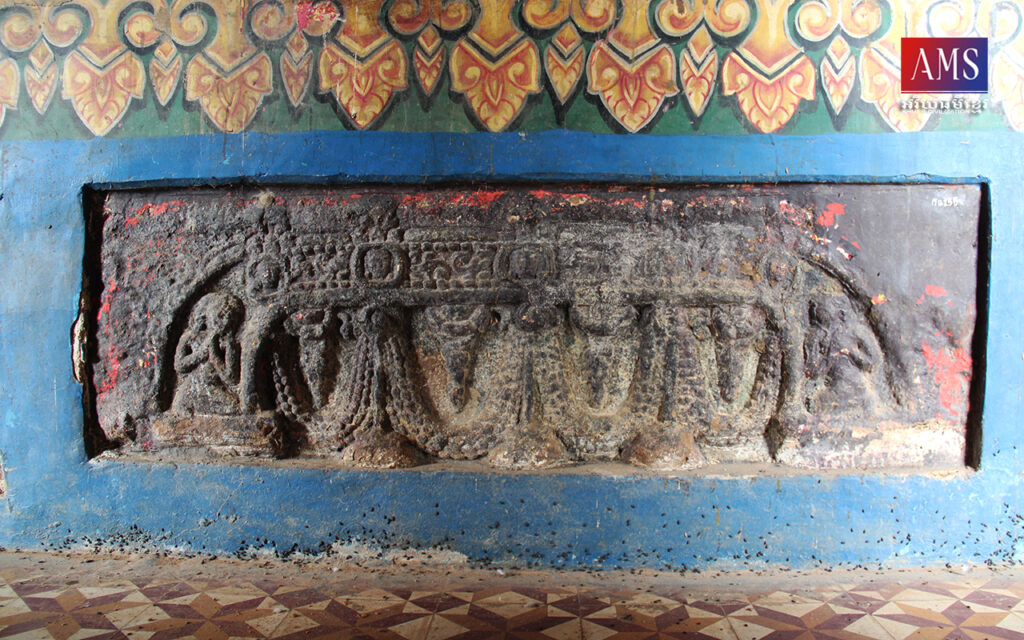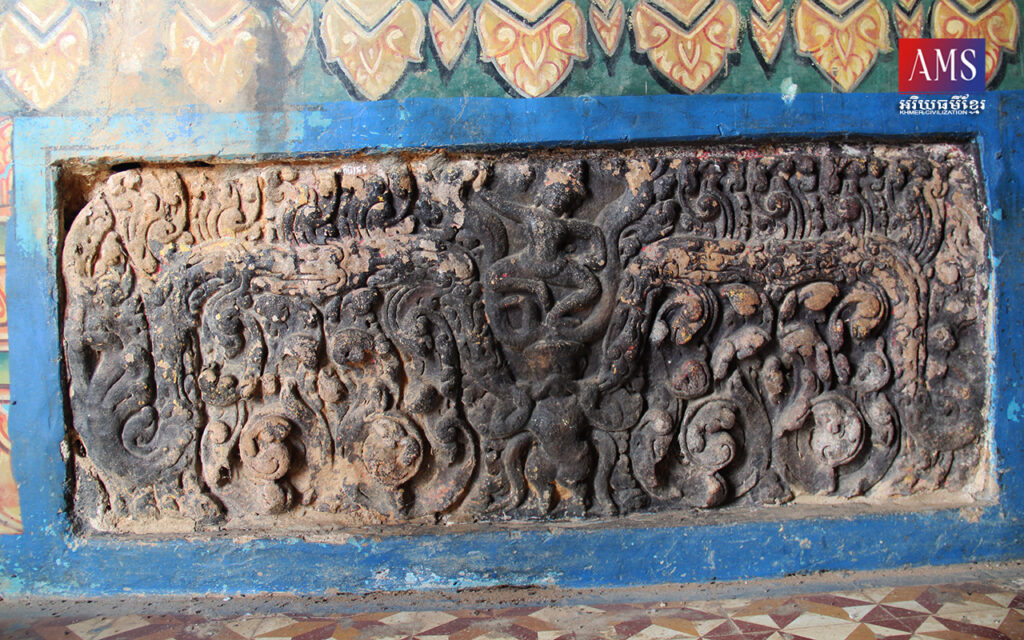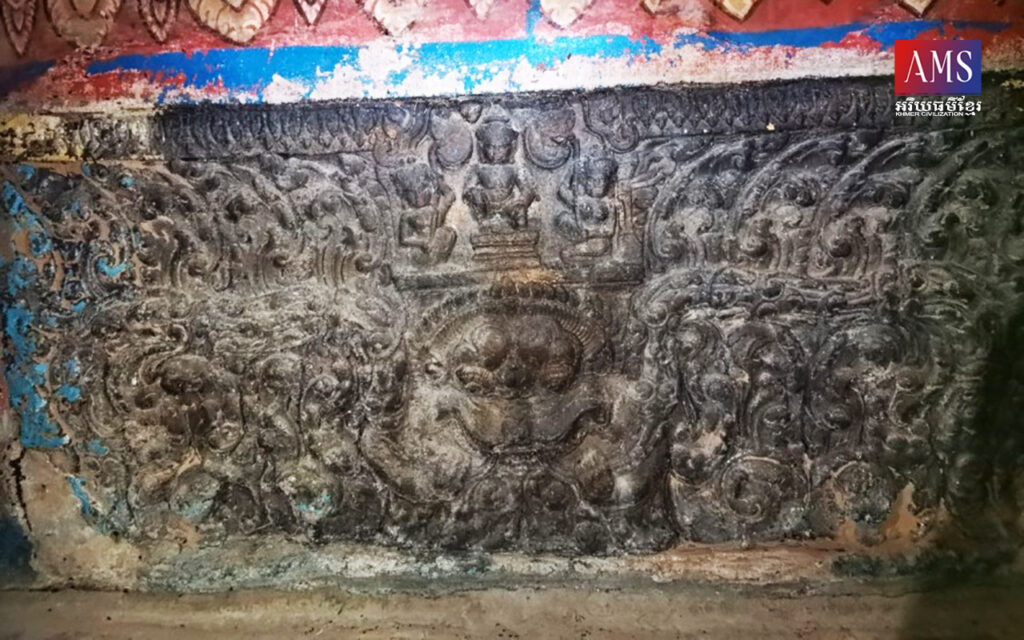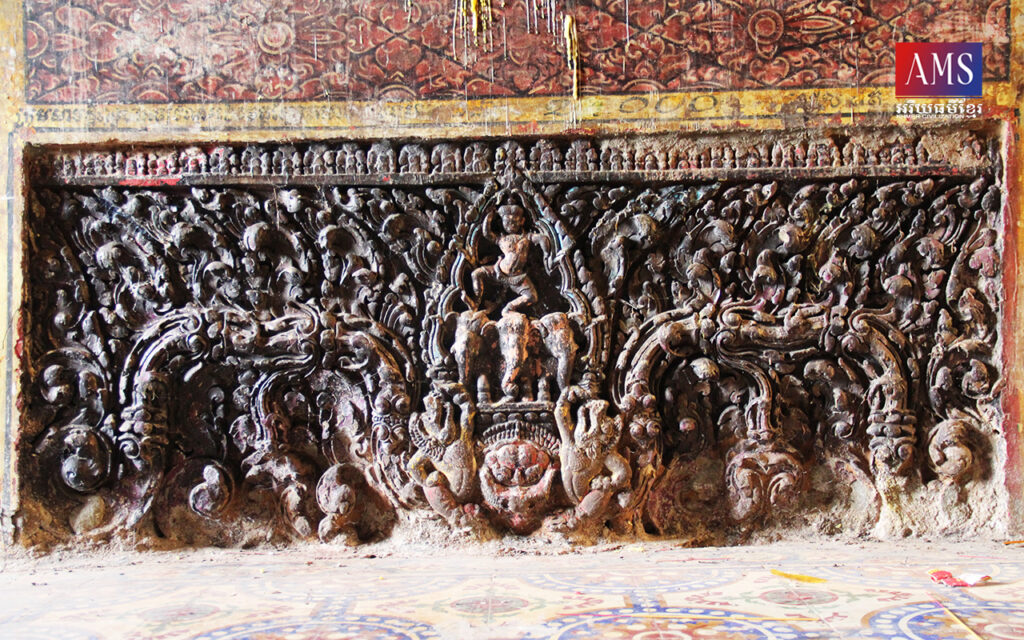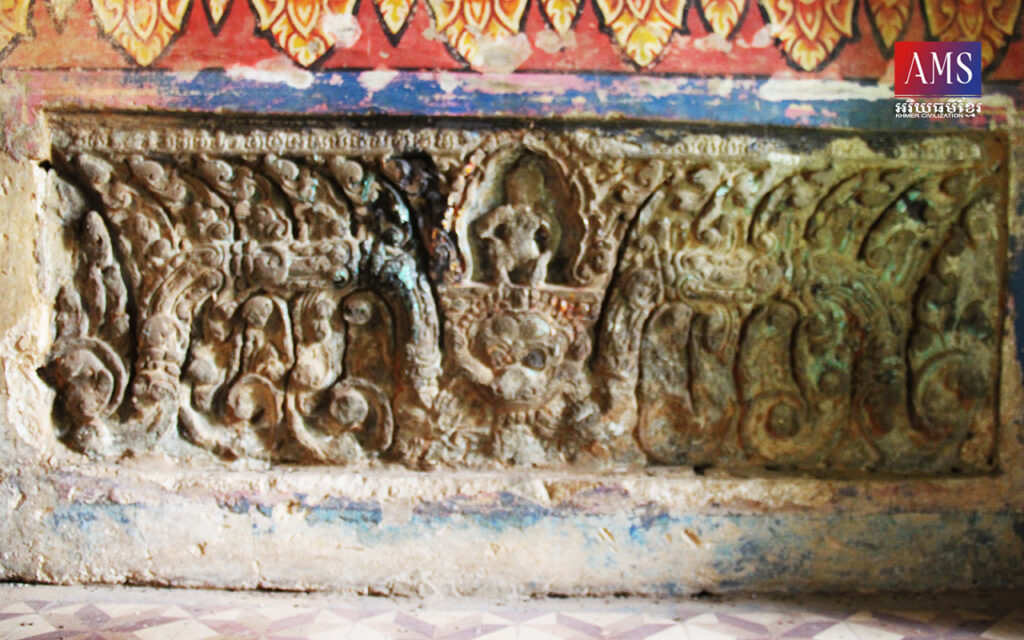វត្តស្លែង មានទីតាំងស្ថិតនៅភូមិស្លែង ឃុំក្តីដូង ស្រុកកំពង់ស្វាយ ខេត្តកំពង់ធំ ដែលមានចម្ងាយប្រមាណ ១០ គ.ម. ភាគពាយព្យទីរួមខេត្តកំពង់ធំ។ វត្តនេះ គឺជាអតីតទីតាំងប្រាសាទមួយ ដែលអាចមានអាយុកាលតាំងពីស.វ.ទី៧ និងសាងសង់បន្ថែមនៅស.វ.ទី១០ ឬ១១ ប៉ុន្តែសំណង់ប្រាសាទចាស់បានបាក់បែកទាំងស្រុងទៅហើយ។ នៅសតវត្សរ៍ទី១៩ ក្នុងរវាងឆ្នាំ១៨៥២ គេបាន កសាងព្រះវិហារមួយធ្វើអំពីឥដ្ឋបូកកំបោរបាយអនៅពីលើទីតាំងប្រាសាទចាស់។
នៅចុងស.វ.ទី១៨ និងដើមស.វ.ទី១៩ មត៌កបុរាណដែលមាននៅវត្តស្លែង ពុំសូវមានអ្នកស្រាវជ្រាវជាតិ និងអន្តរជាតិមកសិក្សាប៉ុន្មានឡើយ ទើបតែសម័យថ្មីនេះប៉ុណ្ណោះដែលមានអ្នកសិក្សាជនជាតិខ្មែរមកសិក្សា មានជាអាទិ៍ដូចជា លោក ញឹម សុភណ្ឌ ឆ្នាំ២០១៣ និងលោកស្រី សែ លាងអ៊ី ឆ្នាំ២០១៦។
វត្ថុសិល្បៈដែលជាមត៌កបុរាណនៅវត្តស្លែងភាគច្រើនសាងឡើងដោយថ្មភក់ ដែលសុទ្ធសឹងជាគ្រឿងលម្អរបស់ប្រាសាទចាស់ មានដូចជា ផ្តែរទ្វារចំនួន ៧ផ្ទាំង ជើងទម្រ ៤ដុំ ថ្មគោលព្រះពុទ្ធសាសនា ៣ ដុំ ។ល។ វត្ថុបុរាណទាំងនេះ មិនមែនជារបស់ស្ថិតនៅទីតាំងដើមនៅក្នុងវត្តស្លែងទាំងអស់នោះឡើយ ដ្បិតរបស់ខ្លះគេយកមកពីទួលបុរាណដែលស្ថិតនៅជុំវិញវត្ត មានដូចជា ទួលអន្សាស្លែង ទួលពោធិរណប ទួលនាគសេន ទួលថ្ងាន់ ។ល។
ក្នុងចំណោមផ្តែរទ្វារទាំងអស់នៅវត្តស្លែង មានផ្តែរទ្វារសាងនៅសម័យមុនអង្គរចំនួន ២ផ្ទាំង និងសម័យអង្គរចំនួន ៥ផ្ទាំង។ ផ្តែរទ្វារដែលគួរឲ្យចាប់អារម្មណ៍ជាងគេ គឺផ្តែរទ្វារសម័យមុនអង្គរ ស.វ.ទី៧ ដែលសព្វថ្ងៃគេដាក់នៅខាងមុខព្រះវិហារចាស់ ហើយផ្តែរនេះគេយកមកពីទួលប្រាសាទចាស់មួយឈ្មោះថា “ទួលអន្សាស្លែង” ដែលស្ថិតនៅទិសនិរតីវត្តស្លែងប្រមាណ ៥០០ម៉ែត្រ ទួលមានទំហំ ២០ គុណ ៣០ម៉ែត្រ។ ផ្តែរទ្វារនេះមានចម្លាក់រឿងសសរភ្លើងក្នុងព្រហ្មញ្ញសាសនា ហើយជាសិល្បៈដែលកម្រមានខ្លាំងណាស់នៅក្នុងសិល្បៈខ្មែរ ដ្បិតចម្លាក់ប្រភេទនេះគេធ្លាប់ឃើញតែមួយផ្ទាំងទៀតប៉ុណ្ណោះនៅវត្តមហរ ស្រុកកំពង់ស្វាយ (ភាគច្រើនគេហៅផ្តែរនោះថា ផ្តែរវត្តអង្គខ្នារ)។ នៅលើផ្តែរទ្វារនេះ យើងឃើញមានចម្លាក់ពីរជាន់ ដែលនៅផ្នែកខាងលើត្រង់ផ្នែកកណ្តាលមានចម្លាក់ក្នុងរង្វង់ចំនួនបី តែចម្លាក់ទាំងនោះបានរលុបស្ទើរអស់ទៅហើយ នៅផ្នែកខាងចុងផ្តែរមានចម្លាក់នាគរាជ (Nâgarâja)។ ចំណែកនៅផ្នែកកណ្តាលនៃផ្តែរ គឺជាចម្លាក់រឿងសសរភ្លើង ដែលក្នុងនោះមានចម្លាក់តួអង្គចំនួន ៥ ហើយនៅកណ្តាល គឺជារូបសសរភ្លើងព្រះឥសូរ នៅខាងស្តាំសសរភ្លើងជារូបព្រះព្រហ្ម នៅខាងឆ្វេងសសរភ្លើងជារូបព្រះវិស្ណុ និងនៅសងខាងយើងមិនដឹងជាទេពអ្វីឡើយ។
ផ្តែរទ្វារសម័យមុនអង្គរមួយទៀតគេដាក់នៅក្នុងព្រះវិហារចាស់ ត្រង់ផ្នែកខាងលិច ដោយបិតជាប់ជាមួយបេតុងនៃបល្ល័ង្កព្រះ។ ផ្តែរទ្វារនេះអាចមានតែមួយគត់ក្នុងសិល្បៈខ្មែរ ព្រោះនៅលើក្បាច់បន្ទាត់ធ្នូ គេឃើញមានលម្អក្បាច់ឬគូឌុដោយមានលម្អជារូបទេពនៅខាងក្នុង។ ក្បាច់បន្ទាត់ធ្នូមានរាងត្រង់ នៅខាងចុងមានរូបទេពស្រីអង្គុយលើកដៃប្រណម្យត្រឹមចុងចង្កា ហើយផ្នែកខាងក្រោមចំពាក់កណ្តាលជារំយោលផ្កា និងកម្រងមាលា។
ចំណែកផ្តែរទ្វារសម័យអង្គរវិញ មានចំនួន៥ផ្ទាំង ដូចរៀបរាប់ខាងលើ។ ផ្តែរទីមួយ គេដាក់នៅខាងលិចព្រះវិហារចាស់ នៅបល្ល័ង្កព្រះដូចគ្នា។ នៅផ្នែកកណ្តាលគេឆ្លាក់រូបព្រះក្រឹស្ណដែលជាអវតារព្រះវិស្ណុគង់នៅលើគ្រុឌប្រយុទ្ធជាមួយនាគកលិយ និងនៅផ្នែកខាងចុងនៃផ្តែរលម្អជារូបនាគ។ ផ្តែរនេះ ទំនងជាសិល្បៈចុងស.វ.ទី១០ ឬដើមទី១១ រចនាបថបន្ទាយស្រី ឬរចនាបថឃ្លាំង។
ផ្តែរសម័យអង្គរទី២ គេដាក់នៅទិសខាងត្បូងក្នុងព្រះវិហារ មានចម្លាក់ទេពប្រុសមួយអង្គអង្គុយបញ្ឈរជង្គង់និងទេពស្រីពីរអង្គបក់ផ្លិតថ្វាយ ហើយនៅខាងក្រោមមានលម្អជារូបរាហូ។ យើងពិបាកសន្និដ្ឋានថាទេពនេះ ជាទេពណាមួយណាស់ (តែអាចជាព្រះឥសូរ?) ប៉ុន្តែផ្តែរទ្វារនេះ ទំនងជាសិល្បៈនៅស.វ.ទី១១ ក្នុងរចនាបថបាភួន។
ផ្តែរទ្វារទី៣គេដាក់នៅខាងកើត មានចម្លាក់រូបព្រះឥន្រ្ទគង់នៅលើដំរីក្បាលបី ក្នុងកាយវិការហក់លោតបាញ់វជ្រ (គ្រាប់រន្ទះ) ដ្បិតព្រះឥន្រ្ទជាទេពនៃទឹកភ្លៀង និងជាលោកបាលប្រចាំនៅទិសខាងកើត។ នៅខាងក្រោមដំរីក្បាលបី មានចម្លាក់រាហូក្នុងកាយវិការដៃទាំងពីរចាប់កាន់ជើងតោដែលកំពុងងើយឡើងលើ។
ផ្តែរទ្វារនេះ មានលក្ខណៈប្រហាក់ប្រហែលនឹងផ្តែរទ្វារនៅខាងត្បូង ដែលអាចឆ្លាក់ឡើងនៅស.វ.ទី១១ដូចគ្នា និងអាចសិល្បករដែលឆ្លាក់ជាមនុស្សតែម្នាក់ផង។ ផ្តែរទ្វារទី៤គេដាក់នៅខាងជើង មានទម្រង់ជាសិល្បៈស.វ.ទី១១ដូចគ្នា ដែល យើងឃើញមានចម្លាក់រូបទេពអង្គុយបញ្ឈរជង្គង់ម្ខាង (ទំនងជាព្រះកុបេរ?) ឆ្លាក់នៅក្បាច់រាងហោជាង គង់លើទម្រ ដែលនៅខាងក្រោមមានរូបរាហូលៀនអណ្តាតចេញក្រៅ និងដៃទាំងពីរកាន់ក្បាច់បន្ទាត់ធ្នូ។
ផ្តែរទ្វារសម័យអង្គរចុងក្រោយ គឺរក្សាទុកនៅខាងក្រៅព្រះវិហារចំទិសខាងកើតក្នុងរោងមួយ។ ផ្តែរទ្វារនេះ បាក់អស់ពាក់កណ្តាលទៅហើយ។ នៅផ្នែកកណ្តាល យើងឃើញមានចម្លាក់មួយអង្គអង្គុយបញ្ឈរជង្គង់ម្ខាង ដែលទំនងជារូបព្រះឥសូរ ហើយនៅខាងស្តាំមានចម្លាក់រូបព្រះវិស្ណុមានព្រះហស្ថបួនដោយកាន់កេតនភណ្ឌផ្សេងៗដូចជា កងចក្រ ដុំមូល ខ្យងស័ង្ខ និងដំបង គង់នៅលើគ្រុឌជាយានជំនិះ ផ្នែកខាងក្រោមចំពាក់កណ្តាលមានរាហូដៃកាន់ជើងតោ។ ផ្តែរទ្វារនេះ ទំនងជាសិល្បៈរចនាបថបាភួន ក្នុងស.វ.ទី១១។
ក្រៅអំពីផ្តែរទ្វារ ដែលបានរៀបរាប់ខាងលើ នៅវត្តស្លែងក៏មាននៅសល់ថ្មគោលព្រះពុទ្ធសាសនាដែលសាងនៅចុងសម័យអង្គរ និងនៅសម័យកណ្តាលក៏មាន។ ក្រៅពីនេះ មានជើងទម្របដិមាសម័យអង្គរ ស្លឹកសីមាសម័យកណ្តាលមួយចំនួន។
ជារួមមកវត្តស្លែង ជាទីសក្ការបុរាណដែលមានប្រាសាទចាស់តាំងពីសម័យមុនអង្គរ និងអង្គរ ក្នុងលទ្ធិព្រហ្មញ្ញសាសនា ព្រមទាំងបន្តគោរពប្រណិប័តន៍មកជាសំណង់ព្រះពុទ្ធសាសនាថេរវាទនៅសម័យថ្មី។ ទីនេះ ក៏ស្ថិតនៅតាមបណ្តោយផ្លូវបុរាណចេញពីតំបន់អង្គរឆ្ពោះទៅខាងត្បូងផង៕
———————————————————————–
Cultural artifacts in Wat Slaeng
Wat Slaeng is located in Slaeng village, Kdei Dong commune, Kampong Svay district, Kampong Thom province. It is about 10 kilometers northwest of Kampong Thom town. The location of Wat Slaeng was having a 7th-century temple and that temple was adding some parts during the 10th or 11th century. However, it was completely ruined. In the 1900s or 1852, a Vihara made of brick and stucco was built on the location of the temple.
At the end of the 18th and early 19th centuries, the artifacts in Wat Slaeng were rarely taken attention from local and international researchers. In 2013, some of those artifacts were studied by Mr. Nhim Sophorn and by Ms. Se Leangyi in 2016. The majority of artifacts are made of sandstone and are architectural elements. There are seven lintels, four pedestals, and three Buddhist stone markers. Significantly, these artifacts were not originally in Wat Slaeng but transferred from ancient mounts around Wat Slaeng. Those mounts are Ansa Slaeng, Por Ranob, Neaksen and Thngan.
Among seven lintels, two are in the Pre-Angkorian period, and five are in the Angkorian period. The most interesting lintel is a 7th century which was placed in front of an old Vihara. This lintel came from Ansa Slaeng mount (Toul), about 500 meters’ southwest Wat Slaeng. The mount is about 20 by 30 meters. It depicts a Brahmanism myth, a Pillar of fire, and a rare representation in Khmer art. One of these scenes presents on a Lintel at Wat Mahor, Kampong Svay district (or Litnel of Wat Angkhna).
The reliefs on the lintel have two levels. The middle part has three medals, and each of them has a figure on it. However, the decay of the stone is hard to recognize those figures. At the two ends of the lintel have figures of Naga. Importantly, in the middle is a pillar of fire that represents Lord Shiva. On the right of a pillar of fire is Brahma and the left is Vishnu. However, the other two figures are not able to recognize. Another 7th-century lintel was placed in the west area in an old Vihara. It was connected to a concrete Buddha statues’ pedestal. It is a unique lintel in Khmer art as an arch of the lintel decorates with Kudus of divinities. At the two ends of the lintel have a seated female divinity raises her hands in a worship gesture. The lower part has motifs and garlands of flowers.
In addition to the Pre-Angkorian period lintels, the first Angkorian lintel was placed in the Vihara in the west area. It was decorated with a figure of Krishna on Garuda fighting with Kaliya. This lintel could be dated to the late 10th to early 11th century. The second lintel is in the Vihara at the south. It has a male and two female divinities and below them is a figure of Kala. The lintel is in the 11th century of Baphoun style. The third lintel is in the Vihara at the east. It depicts Lord Indra with his attribute, Vajra on a three heads elephant. The below part has a figure of Kala catching the legs of a lion. This lintel is similar to the one in the south and might be in the 11th century. The fourth lintel is also in Vihara at the north. It has characteristics of an 11th-century art style. It illustrates a male divinity that could be Kuber. The fifth lintel is in a shelter outside of the Vihara. It has only half. A figure in the middle could be lord Shiva. On the left is Vishnu four arms and four attributes on Garuda. It could be to the 11th century. In conclusion, Wat Slaeng has been a sacred place since the Pre-Angkian period. Also, it locates along the highway from Angkor to the south.
អត្ថបទដើម៖ លោក ម៉ង់ វ៉ាលី



